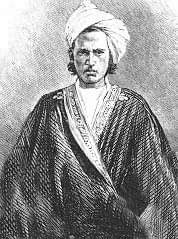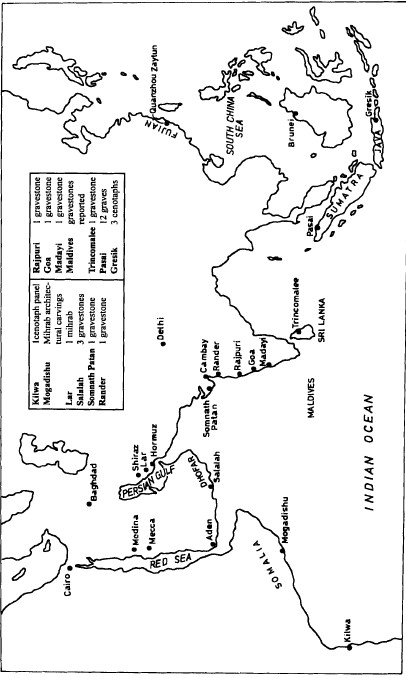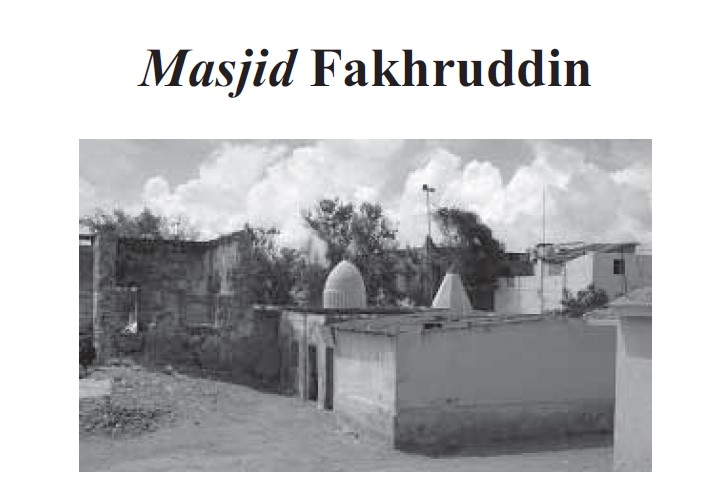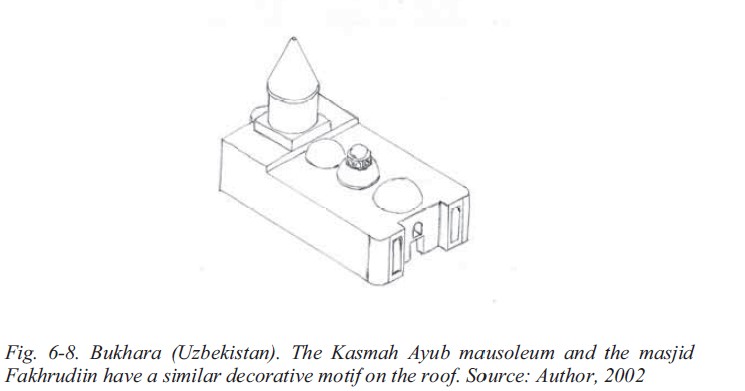Bixi kicked out the spanish researchesReconstruction modeling of a 16th-century mosque in Somaliland:

Reconstrucción virtual en 3D de la mezquita de Abasa (Somalilandia) (s. XVI)
En estos meses hemos estado trabajando en una nueva reconstrucción virtual desde 3D Stoa – Patrimonio y Tecnología, en colaboración con el CSIC, el Consejo Europeo de Investigación, el Incipi…parpatrimonioytecnologia.wordpress.com
I think it was built by the herders that underwent long-range pasture seasonal migrations.
You are using an out of date browser. It may not display this or other websites correctly.
You should upgrade or use an alternative browser.
You should upgrade or use an alternative browser.
HISTORY Was the 13th century Fakhruddin masjid built with a Central Asian architectural style?
The alchemist
VIP
I have criticisms of the Spanish archeologist's practices and works that came to Somaliland. I had assumed they finished their stuff and went to Djibouti (currently working on two projects). Do you have any extra information on the context of why they were kicked out specifically?Bixi kicked out the spanish researches
Nah I just heard they got kicked out from someone else, they do have a Twitter account tho which they post regularlyI have criticisms of the Spanish archeologist's practices and works that came to Somaliland. I had assumed they finished their stuff and went to Djibouti (currently working on two projects). Do you have any extra information on the context of why they were kicked out specifically?
Somali_patriotic
Everything unuka leh
Can you show me where somalis were mentioned as settlers and traders by the British raj?despite being mentioned by the british raj as being traders in india and some even setteled in india most of them became unrecognizable indian citizens.
Garaad diinle
I don't remember much but here is what i got right now. The british raj conducted a census in the bombay presidency that lay on the western side of indian subcontinent. The census accounted for somalis in that part of india. This census was conducted in the 1870s which was long before colonialism came to somalia so these are most like not the ones that the british would bring later on.Can you show me where somalis were mentioned as settlers and traders by the British raj?

Another account i recall is that of a somali sheikh by the name of sheikh haji ali majeerteen that is said to have visited somewhere in west india presumably gujurat or mumbay and built a mosque there. Here is a picture of him in the british campaign against tewodros.

Finally it's been mentioned by ibn battuta that there was a heavy trade between mogadishu and maldives and it was so much so that one of islands of maldive had a somali governor called Abd al-Aziz of Mogadishu. Ibn battuta even meet a man called sa'id of mogadishu in kerela in southern india who've travelled as far east as china. Mogadishu imported some decorative pieces for their mosque in the 13th century from gujurat and one of the sultans of india even claimed mogadishu all the way from india. This goes to show the importants of the somalia india trade.
Hamzza
VIP
Is this really Xaaji Cali Majerteen? Can you give us more information about this picture and what British said about him?Another account i recall is that of a somali sheikh by the name of sheikh haji ali majeerteen that is said to have visited somewhere in west india presumably gujurat or mumbay and built a mosque there. Here is a picture of him in the british campaign against tewodros.

How could a warsengili have an Arab grandfather? How would that even work, are you Somali even?No I thought he was one of those cadcad dudes who’s forefathers was Yemeni but came to Somalia
Garaad diinle
I don't have the book anymore i had the image stored and originally taken from some wiki page. The book didn't say much about him other than his name which i was looking for to confirm if the picture belonged to him or not. I found the book while looking for books on the campaign against twedros.Is this really Xaaji Cali Majerteen? Can you give us more information about this picture and what British said about him?
Another interesting thing is you might have seen this picture somewhere on the internet where they say it's an image of abadir.

In reality it's a picture of an oromo prince from wallo who probably belong to the yejju oromos. I suspect the princely family might have been originally of sheekhal origin since they're often said to have been muslims that've been absorbed by oromo. They trace ancastory to a man called omar, perhaps fiqi omar?
Here is the original image of that drawing from the same book that showcases the sheikh haji ali.

He did say he thought he was cadcadHow could a warsengili have an Arab grandfather? How would that even work, are you Somali even?
Somali_patriotic
Everything unuka leh
Ma'sha'allahAnother account i recall is that of a somali sheikh by the name of sheikh haji ali majeerteen that is said to have visited somewhere in west india presumably gujurat or mumbay and built a mosque there. Here is a picture of him in the british campaign against tewodros.
Do you know the name of the mosque
I did a quick search and didn't find anything about it
You can find in Xamarweyne and Berbera architectural influences from india and turkey.
Berbera?You can find in Xamarweyne and Berbera architectural influences from india and turkey.
Garaad diinle
I don't remember i might've read it from a book here on sspot or someone shared it on twitter. There was this oral biography on youtube if i remember correctly and it also mentioned a mosque built by the sheikh. He had an eventful life, he even took part in the wars between the bimaal and the gheledi in 1850s.Ma'sha'allah
Do you know the name of the mosque
I did a quick search and didn't find anything about it
xiin-finiin
general of ciidamada sida raha ubooda
is it named after the philosopher-theologian imam fakhradin-razi ?
I thought he was cud cud before I found out he was the sultan of warsengili.How could a warsengili have an Arab grandfather? How would that even work, are you Somali even?
I just judge him off by his appearance so relax
Hamzza
VIP
If I recall correctly, Sheikh Xaaji Cali Majeerteen died in 1848/9 near Marka where he is buried today and this photo was taken approximately in 1868 during the British punitive expedition to Abyssinia, so it can't be him.don't have the book anymore i had the image stored and originally taken from some wiki page. The book didn't say much about him other than his name which i was looking for to confirm if the picture belonged to him or not. I found the book while looking for books on the campaign against twedros.
a lot of the mosque was destroyed by italians you know. it was much largerI was reading a book 'Exploring the Old Stone Town of Mogadishu' by Nuredin Hagi Scikei
You don't have permission to view the spoiler content. Log in or register now.
I came across an interesting section regarding the Fakhruddin masajid in Xamar Weyne being a little sophisticated than the other masjids in the area.
Firstly, he referenced an earlier study by E. Lambourn, in that Fakhruddin masajid's finishes were made of Cambay marble from Gujarat on top of it's coarse coral structure rather than fine fossilized coral the other masjids used.


You don't have permission to view the spoiler content. Log in or register now.
More interestingly, he pointed out the motifs and mihrab on top of the mosque were very similar to the 12th century Chasma Ayub mausoleum in Bukhara, Uzebkistan.



@Hamzza @killerxsmoke @Garaad diinle
